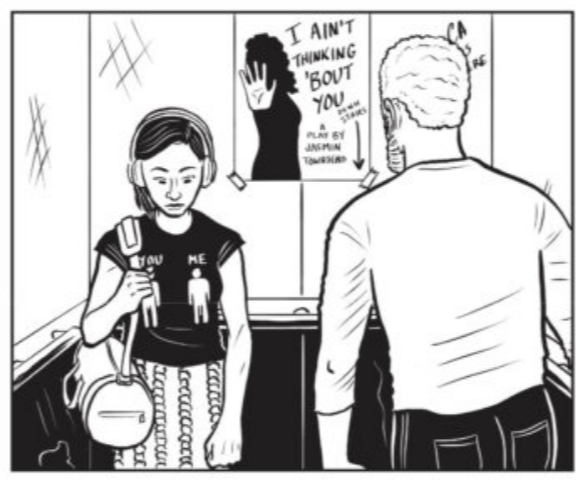
The Process of Making Comics is a series that examines how comics artists put together their work for the magazine. In this entry, Peter Quach and Carolina Alonso Bejarano share what it was like to make Pinan for the December/January 2018 issue.
THE BELIEVER: How did this comic start?
PETER QUACH: I had just moved to Chicago, and I was talking with one of my roommates about her dating life using Tinder. And at the same time, I was grappling with new stories of sexual assault from people in my life and trying to understand it in a more concrete rather than abstract way. I process the world through comics, and it felt necessary to write this story to better understand what the women in my life had been through. So I called Carolina, who has been my frequent collaborator, and asked what she thought.
CAROLINA ALONSO BEJARANO: When Peter told me of his new comic idea, I asked him, as a hetero, cis-gender man who’s never been harassed, what he could say about sexual harassment from the perspective of a woman. I asked him how he planned to do his research, and I told Peter, “It’s time for men to listen.” He replied, “It’s time for men to speak up,” and then he hung up. I was really skeptical of what he would write, especially when I didn’t hear from him for a few days. When he called me back, he asked me to collaborate in writing this with him. I thought that was a good idea.
BLVR: What’s your process like?
CAB: Peter and I have been collaborating in comics since 2014. Our process starts with a conversation where we outline the main plot points and discuss the takeaways from the story. Pinan was different because the story was commissioned as a fifteen page comic, and in that limited space we knew we couldn’t do justice to the full experience of dealing with life after a sexual assault, so instead we chose to focus on just a moment in time.
PQ: After we determined the main plot, I wrote out a very rough first draft of the story in script form. I had to think of a visual way for Juliana, the main character, to deal with her trauma, and it suddenly came to me that we could have her practice karate as a way to cope. We could use my own knowledge as a karate practitioner, and karate could serve as an overarching metaphor for Juliana’s healing process and state of mind. I sent Caro the first draft, and we discussed it. She thought my first ending for the story was horrible.
CAB: I knew I wanted to portray Juliana as something more than a victim. I wanted her to feel powerful. And I wanted the entire story to reflect that, so my edits and comments to Peter’s various drafts were made with that in mind. The relationships between characters also reflected this complexity—I drew upon my real-life relationship with one of my life partners to represent the solidarity Juliana shared with her best friend Jasmin in the story. Many other characters who appeared in the background were cast from the amazing and diverse people we know in real life. We were thinking a lot about representation as we developed each panel.
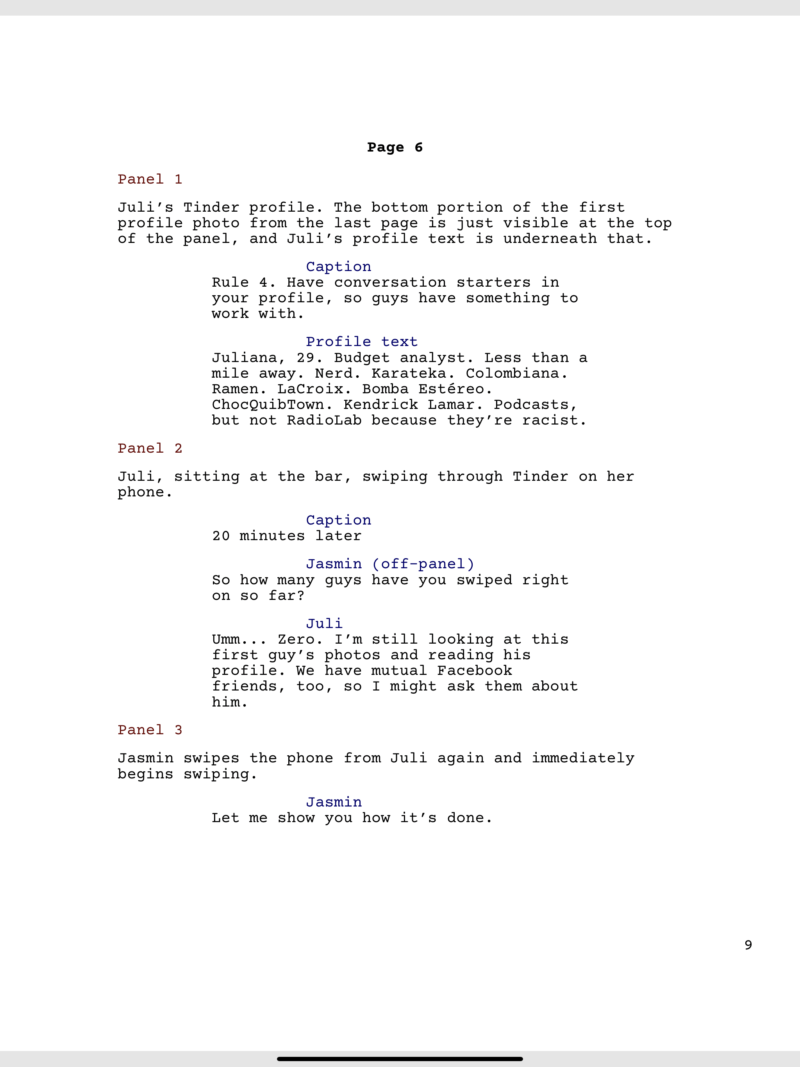
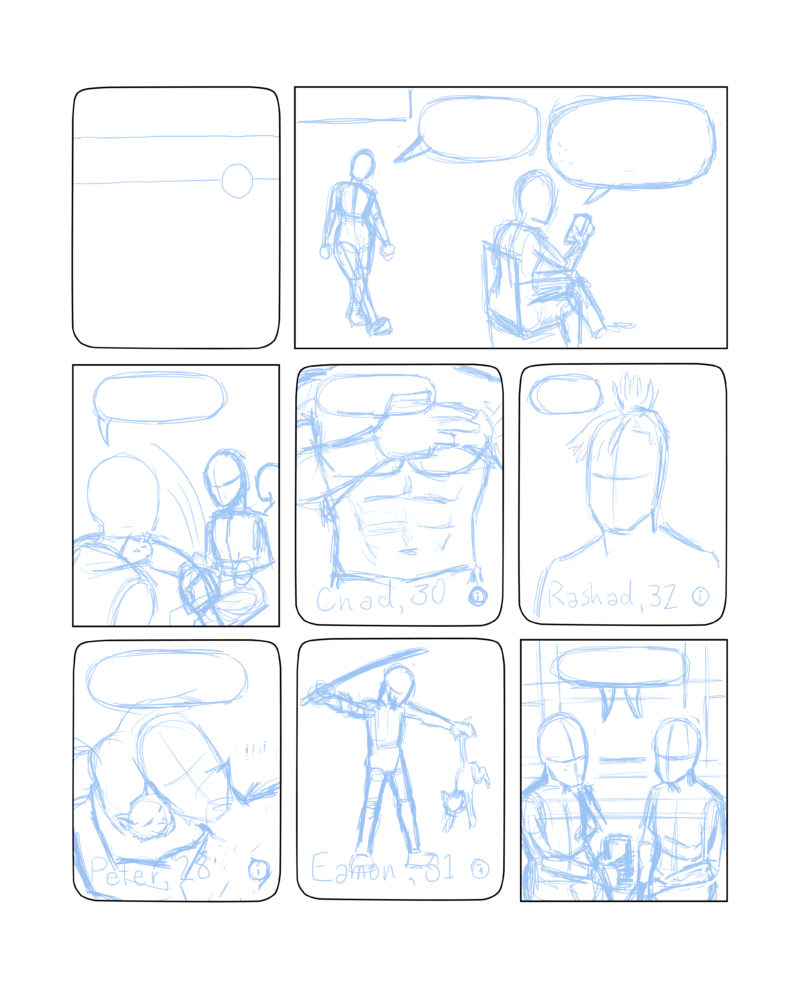
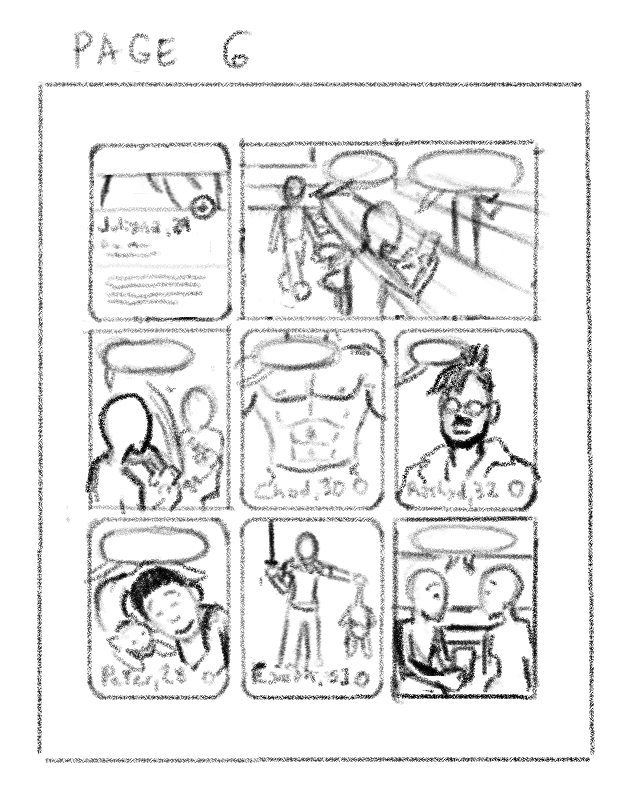
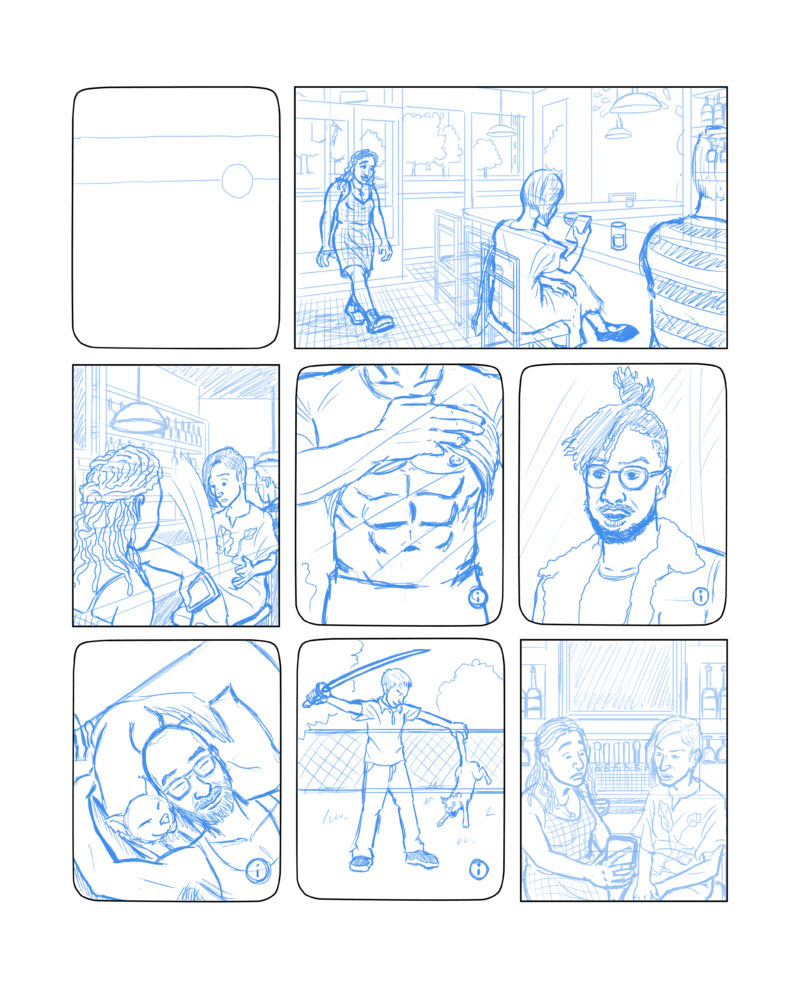
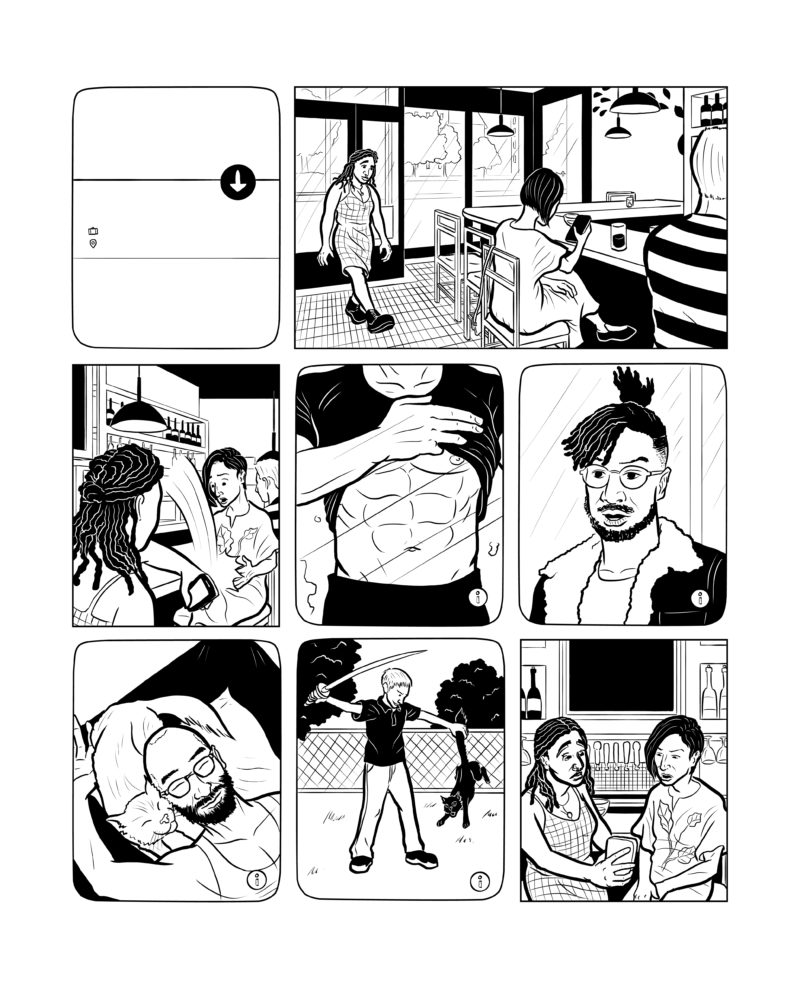
BLVR: Was any aspect of making this work particularly challenging?
CAB: All of our past collaborations have been four-panel comics, so we have never written a long story together. Even though I always edit Peter’s individually-written stories, I didn’t realize the work that goes into a longer format comic, from choosing the outfits to designing the backgrounds for multiple scenes.
PQ: For me, the hardest part of this comic was writing and drawing something from a female perspective. And a lot of my inclinations for where to take the story would have seemed inauthentic without Caro’s help. I’m also not the most fashionable person, so Caro deserves a lot of credit for making sure these people had style, too.
BLVR: What drives you to create new work?
PQ: I process the world through writing and drawing comics. If I weren’t creating new comics, I’d feel lost. The trick is getting someone to pay you to do it.
CAB: As an educator, my drive is to create new ways of knowing that undo patriarchal and colonial formations, and in Pinan, I feel I advanced that agenda.
BLVR: Without naming any comics artists, what influences you most?
CAB: I’m a DJ, so music plays a big role in my life. I love tunes that come from all over the Americas, and I’m more attracted to beats than I am to lyrics. Electronic cumbia inspires me to create new fusions, and in Pinan we give shout-outs to the artists I like, such as ChocQuibTown, Bomba Estéro, Princess Nokia, and Kendrick Lamar.
PQ: I’m drawn to media that portrays the full range of human experience—sadness, joy, anger, melancholy, beauty, and everything in between. Kore-eda Hirokazu’s Shoplifters was the last great movie I’ve seen that I felt captured that full range of emotion. I’m currently reading Lisa Brennan-Jobs’s Small Fry, and that book is a perfect combination of sadness and joy.
BLVR: Which comic should we drop everything and read right now?
PQ: I’m excited to finally read the end of Jason Lutes’s Berlin, which took over twenty-two years to complete.
CAB: I think everyone who likes superhero comics should read the Ms. Marvel series about Kamala Khan, written by G. Willow Wilson. Its depiction of New Jersey life from the eyes of a Pakistani-American superhero is open-hearted, transgressive, and fun.
BLVR: What are you working on next?
CAB: I co-wrote a book just published by Duke University Press, Decolonizing Ethnography, which talks about undocumented immigrants organizing for their rights in New Jersey, where I teach and do my research. I’m currently working on my next book, Artivismo Indocumentado, which deals with how art has been mobilized by different immigrant activists across the tri-state area as a tool for social change.
PQ: I’m co-writing with Carolina a comics memoir about my family’s flight from Vietnam after the war and the struggle to build a life in a new land, and how that struggle is linked to the colonial history of Vietnam itself. I’m also about to start up my webcomic But by Laughter again, and I’m working on a foreword (in comics form) for the eventual print collection of a serial webcomic Carolina and I co-wrote for three years, Gumdrops.
CAB: I feel inspired to be coming along for the adventure of researching and writing this family memoir comic with Peter. After years of collaborating, this is the next step in our creative partnership. We have booked a trip to Vietnam to do research for the book and we are brainstorming and outlining ideas almost every day. It is an exciting time for us!





